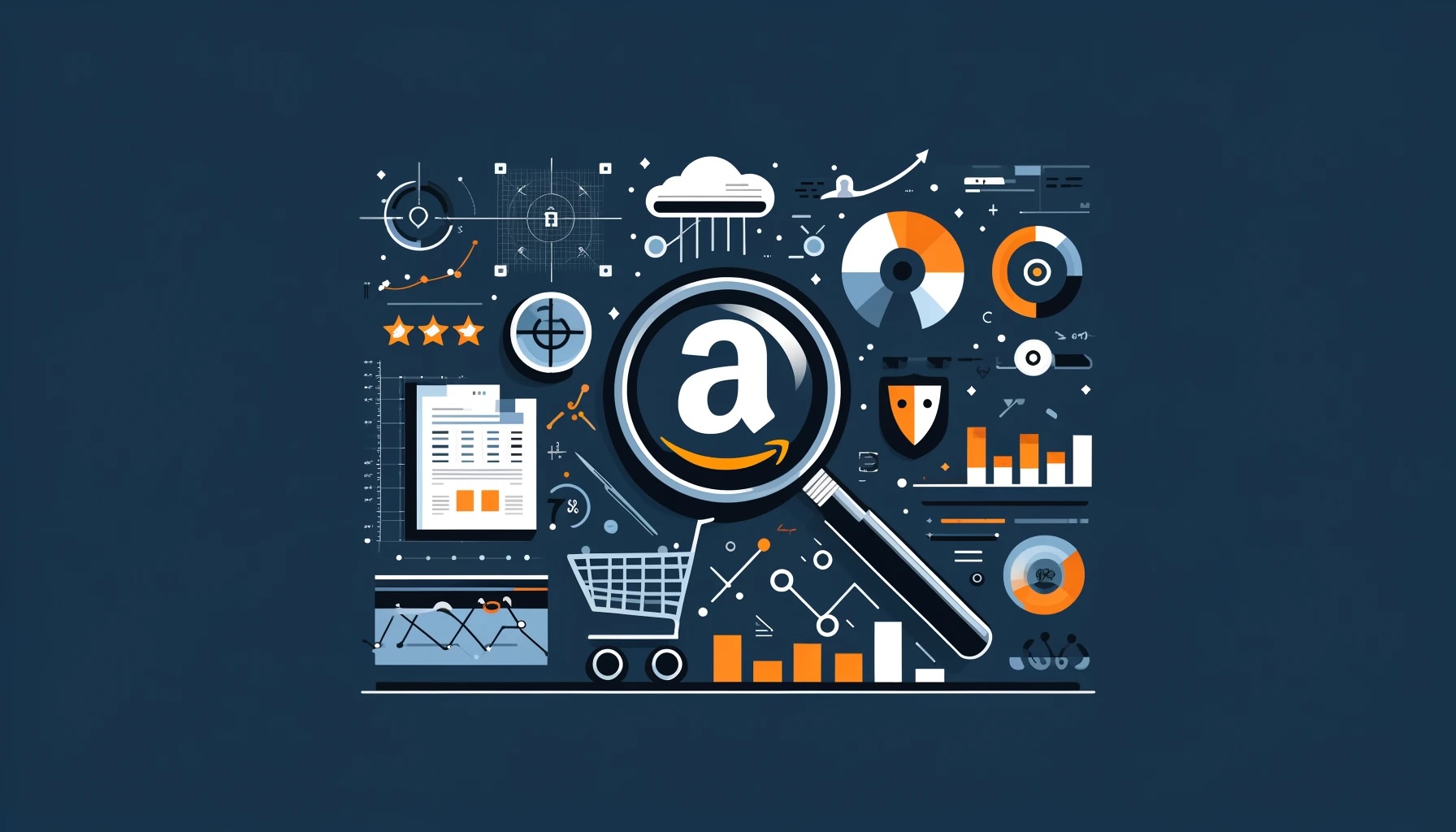Next-Level Amazon Advertising: The Ultimate Guide to ACoS and TACoS in 2024
Expert Ecommerce Insights and Strategies to Help Maximize Your Amazon Ad Campaign ROI and Elevate Your Brand Above the Competition in 2024

As an ecommerce seller, effectively managing your Amazon advertising campaigns is crucial for driving sales and profitability. Two key metrics that every seller should understand are Advertising Cost of Sales (ACoS) and Total Advertising Cost of Sales (TACoS).
In this comprehensive guide, we’ll explore these metrics in depth, providing definitions, calculations, and proven strategies to help you maximize your Amazon advertising performance in 2024.
Thinking About Hiring an Amazon Management Agency?
Canopy’s Partners Achieve an Average 84% Profit Increase!
Let’s talkUnderstanding Amazon Advertising Cost of Sales (ACoS)
Amazon Advertising Cost of Sales (ACoS) is a vital metric that every Amazon seller should closely monitor and understand. It provides a clear picture of the effectiveness and profitability of your Amazon advertising campaigns. In essence, ACoS measures the relationship between your advertising expenditure and the revenue generated directly from those ads.
To put it simply, ACoS tells you how much you’re investing in Amazon advertising to generate one dollar of sales. For example, if your ACoS is 25%, it means you’re spending $0.25 on advertising for every dollar of revenue earned from your ads. A lower ACoS indicates higher profitability, as you’re spending less on advertising to generate each sale.
Calculating your ACoS is straightforward. You simply divide your total advertising spend by the total sales generated from those ads and multiply by 100 to express it as a percentage. The formula looks like this:
ACoS = (Advertising Spend ÷ Advertising Revenue) x 100
So, if you spent $1,000 on Amazon advertising and generated $5,000 in sales from those ads, your ACoS would be:
ACoS = ($1,000 ÷ $5,000) x 100 = 20%
This means you spent $0.20 on advertising for every dollar of revenue earned from your ads.
It’s important to note that ACoS only takes into account the direct sales generated from your ads. It doesn’t include organic sales or the potential long-term value of customers acquired through advertising.
For most sellers, the goal is to find the right balance between driving sales and maintaining profitability. A lower ACoS generally indicates more efficient and profitable advertising, but it’s essential to consider your overall business goals. For example, when launching a new product, you may be willing to accept a higher ACoS to gain market share and visibility.
By continuously monitoring and optimizing your ACoS, you can make data-driven decisions to improve your Amazon advertising performance. This may involve refining your keyword targeting, adjusting bids, testing ad creatives, or optimizing your product listings for better conversion rates.
Thinking About Hiring an Amazon Management Agency?
Canopy’s Partners Achieve an Average 84% Profit Increase!
Let’s talkFactors That Influence ACoS
Several factors can impact your Amazon ACoS, including:
- Product price: Higher-priced items generally have a lower ACoS, as they generate more revenue per sale.
- Conversion rate: A higher conversion rate means more of your ad clicks result in sales, potentially lowering your ACoS.
- Click-through rate (CTR): A higher CTR indicates more relevant and engaging ads, which can lead to increased sales and a lower ACoS.
- Competition: Higher competition in your product category may result in higher cost-per-click (CPC) and ACoS.
Strategies to Optimize ACoS
To improve your Amazon ACoS, consider the following tactics:
- Optimize product listings: Ensure your listings are informative, engaging, and keyword-optimized to improve organic rankings and conversion rates.
- Refine keyword targeting: Regularly analyze your search term report to identify and target high-performing keywords while eliminating or adjusting bids for underperforming ones.
- Adjust bids strategically: Increase bids for keywords generating sales with a low ACoS, and decrease bids for keywords with a high ACoS or low sales.
- Utilize negative keywords: Add irrelevant or poorly performing keywords as negative keywords to reduce wasted ad spend and enhance ACoS.
- Continuously monitor and analyze: Regularly review your Amazon advertising data to identify trends, opportunities, and areas for improvement, making data-driven optimizations.

Mastering Total Advertising Cost of Sales (TACoS)
While ACoS focuses specifically on the direct return from advertising spend, Total Advertising Cost of Sales (TACoS) offers a more comprehensive perspective on your Amazon advertising performance. TACoS takes into account your total revenue, including both organic and paid sales, providing a holistic view of how your advertising efforts contribute to your overall business profitability.
To calculate TACoS, you’ll need to sum up your total advertising spend across all Amazon ad types (Sponsored Products, Sponsored Brands, and Sponsored Display) for a given period.
Then, divide that total ad spend by your total revenue (including sales from both organic and paid traffic) for the same period. Finally, multiply the result by 100 to express TACoS as a percentage.
The formula for TACoS is:
TACoS = (Total Advertising Spend ÷ Total Revenue) x 100
Let’s consider an example to illustrate the calculation. If your total advertising spend for a month is $2,000 and your total revenue (including both organic and paid sales) is $20,000, your TACoS would be:
TACoS = ($2,000 ÷ $20,000) x 100 = 10%
In this scenario, your advertising spend represents 10% of your total revenue. In other words, for every $100 in total sales, you spent $10 on advertising.
Analyzing your TACoS provides valuable insights into the overall efficiency and profitability of your Amazon advertising strategy. A lower TACoS indicates that your advertising spend is generating a higher proportion of your total sales, suggesting a more effective and profitable approach. Conversely, a higher TACoS may indicate an overreliance on paid advertising or an opportunity to optimize your campaigns for better returns.
It’s important to remember that an optimal TACoS will vary depending on factors such as your profit margins, industry benchmarks, and business goals. Some businesses may be comfortable with a higher TACoS during periods of growth or when launching new products, as they prioritize market share and brand awareness over short-term profitability.

How to Improve Your TACoS Strategy
- Optimize your ad campaigns: Continuously monitor and refine your targeting, keywords, bids, and ad creatives to maximize relevance and conversion rates while minimizing wasted spend.
- Improve your organic rankings: Invest in Amazon SEO to increase your organic visibility and sales without relying solely on paid advertising.
- Expand your product mix: Diversify your product offerings to appeal to a wider audience and reduce dependence on a single product or category.
- Enhance your overall conversion rate: Optimize your product listings, pricing, and customer reviews to improve your overall conversion rate and generate more sales from both organic and paid traffic.
Best Practices for Managing ACoS and TACoS in 2024
Set Realistic Targets
To effectively manage your Amazon advertising performance, it’s crucial to set realistic targets for your ACoS and TACoS. Start by calculating your break-even ACoS, which represents the maximum ACoS you can sustain while still covering your product costs and Amazon fees. To determine your break-even ACoS, divide your profit margin by your selling price and multiply by 100.
For example, if your product costs $30, your selling price is $50, and your Amazon fees are $10, your profit margin would be $10 ($50 – $30 – $10). Your break-even ACoS would be 20% ($10 ÷ $50 x 100).
Once you know your break-even ACoS, set realistic targets that align with your business objectives. If your goal is to maximize profitability, aim for an ACoS lower than your break-even point. If you’re focused on growth and gaining market share, you may accept a higher ACoS temporarily.
Similarly, set achievable TACoS targets based on your overall profitability goals and benchmark data for your industry. Regularly review and adjust your targets as your business evolves and your margins change.

Leverage Advanced Analytics
To make data-driven decisions and identify optimization opportunities, leverage the wealth of data available through Amazon’s built-in advertising reports and third-party analytics tools.
Amazon provides a range of reports, including the Search Term Report, Targeting Report, and Performance Over Time Report, which offer valuable insights into your ad campaigns’ performance.
Analyze these reports to identify top-performing keywords, ad groups, and products, as well as areas for improvement. Use the data to inform your bid adjustments, keyword targeting, and ad creative optimizations.
Additionally, consider using third-party Amazon advertising tools that provide advanced features such as bid optimization, keyword research, and competitor analysis. These tools can help you save time, automate tasks, and gain deeper insights into your advertising performance.
Adapt to Market Changes
The Amazon advertising landscape is constantly evolving, with new ad formats, targeting options, and best practices emerging regularly. To stay ahead of the curve, keep yourself informed about the latest Amazon advertising updates and adapt your strategies accordingly.
Monitor changes in consumer behavior, such as shifts in search trends, product preferences, and shopping habits. Use this information to refine your targeting, ad creatives, and product offerings to better align with customer needs.
Stay attuned to your competitors’ activities, including their product launches, pricing strategies, and advertising tactics. Analyze their strengths and weaknesses, and adjust your approach to differentiate your brand and capitalize on opportunities.
Continuously Test and Refine
Successful Amazon advertisers are always testing and refining their strategies to optimize performance. Regularly experiment with different ad formats, such as Sponsored Products, Sponsored Brands, and Sponsored Display, to determine which ones resonate best with your target audience.
Test various targeting options, including keyword targeting, product targeting, and audience targeting, to identify the most effective approaches for your products. Continuously refine your keyword lists, adding high-performing search terms and removing irrelevant or underperforming ones.
Experiment with different ad creatives, including images, videos, and ad copy, to identify the elements that drive the highest engagement and conversion rates. Use A/B testing to compare the performance of different ad variations and iterate based on data-driven insights.

Consider External Factors
When planning and executing your Amazon advertising strategy, consider external factors that can impact your performance. Seasonal trends, such as holidays, back-to-school, or summer sales, can significantly influence consumer behavior and advertising competition. Plan your budgets and campaigns accordingly to capitalize on these opportunities and maintain efficiency.
Monitor your competitors’ activities during key sales periods and adjust your bids, budgets, and ad placements to remain competitive. Analyze their ad copy, images, and promotions to gain insights into effective strategies.
Develop flexible advertising strategies that can adapt to unexpected changes in the market or competitive landscape. This may include having contingency plans for supply chain disruptions, sudden shifts in demand, or new competitors entering your product category.
How Canopy Management Can Supercharge Your Amazon Advertising
Maximizing your Amazon advertising potential requires expertise, strategic planning, and continuous optimization. Canopy Management, a full-service Amazon marketing agency, can help you take your advertising efforts to the next level.
Our team of former Amazonians, multi-million dollar sellers, and award-winning experts specializes in:
- Strategic Amazon advertising planning
- Comprehensive keyword research and targeting
- Proven bid optimization strategies
- Engaging ad creative development
- In-depth performance analytics and reporting
- Continuous testing and refinement
With Canopy Management as your partner, you can unlock the full potential of your Amazon advertising, driving unparalleled results:
- 84% average year-over-year profit growth for our partners
- 2.7 billion in revenue managed
- 99.1% partner retention rate
Don’t let bad Amazon advertising hold your business back. Reach out to Canopy Management today to learn how our team of experts can help you master ACoS and TACoS optimization to boost your sales and profitability in 2024 and beyond.
Thinking About Hiring an Amazon Management Agency?
Canopy’s Partners Achieve an Average 84% Profit Increase!
Let’s talk


